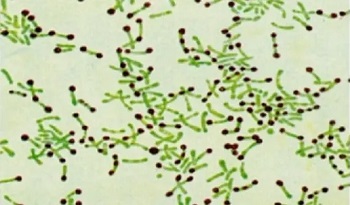Corynebacterium spp. - Classification, Morphology, Habitat, Culture, Species
Introduction to Corynebacterium
Corynebacterium spp. is gram-negative bacteria. The rod-shaped bacillus is aerobic and widely distributed in nature. Most of the species are innocuous and remain as commensals including the human microbiota while species such as Corynebacterium glutamicum are commercially useful. Another important species of Corynebacterium is the Corynebacterium diphtheriae which causes diphtheria.
Classification of Corynebacterium
Phenotypically, Corynebacterium spp. can be classified as
Domain: Bacteria
Phylum: Actinomycetota
Class: Actinomycetia
Order: Mycobacteriales
Family: Corynebacteriaceae
Genus: Corynebacterium
History of Corynebacterium
Historically, in 1896, Lehmann and Neumann created the genus Corynebacterium as a taxonomic group. In 1986, Collins and Cummins described the principal features of the genus Corynebacterium.
The term "diphtheroids" is used for nonpathogenic Corynebacterium diphtheriae.
Species of Corynebacterium
This genus has 46 spp, among which 30 species are associated with human disease. Some medically important Corynebacterium species include:
Corynebacterium diphtheriae
Corynebacterium ulcerans
Corynebacterium urealyticum
Corynebacterium pseudodiptheriticum
Corynebacterium haemolyticum
Corynebacterium jeikeium
Corynebacterium pseudotuberculosis
Morphology of Corynebacterium
Morphologically, Corynebacterium spp. is gram-positive, catalase-positive, non-spore-forming, non-motile, and red in short-chain or clumps that are straight or slightly curved. They are aerobic or facultative anaerobes and are chemoorganotrophs.
The dimensions of the bacteria range between 2 and 6 μm in length and 0.5 μm in diameter.

Corynebacterium spp.
Habitat of Corynebacterium
The non-diphtheroid Corynebacterium habitats as normal flora of humans in the skin, URT, and urogenital tract while other species habits commonly in nature in soil, water, plants, and food products.
Culture of Corynebacterium
Corynebacterium spp. are slow growers even on enriched media. Some stains require thiamine, PABA, and biotin. The bacteria can be grown/cultured in Loeffler's medium, blood agar, and trypticase soy agar (TSA).
Corynebacterium spp. colonies appear as small, gray colonies with a granular appearance. They are convex shaped, mostly translucent, with opaque centers, and with continuous borders. In Loeffler's medium, Corynebacterium forms yellowish-white colonies, in TSA it forms grey colonies with black centers.